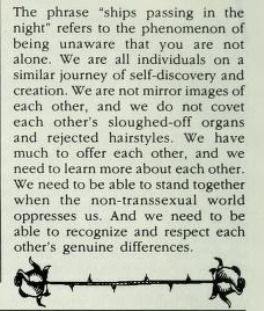#tv/ts tapestry
Explore tagged Tumblr posts
Text

from “All Transsexuals are Not Alike” by James Green, published in the summer 1994 issue of TV/TS Tapestry
#tv/ts tapestry#queer history#transsexual#transmasc#ftm#trans men#ftm mtf solidarity#james green#queer zine#transgender#transmasculine
2K notes
·
View notes